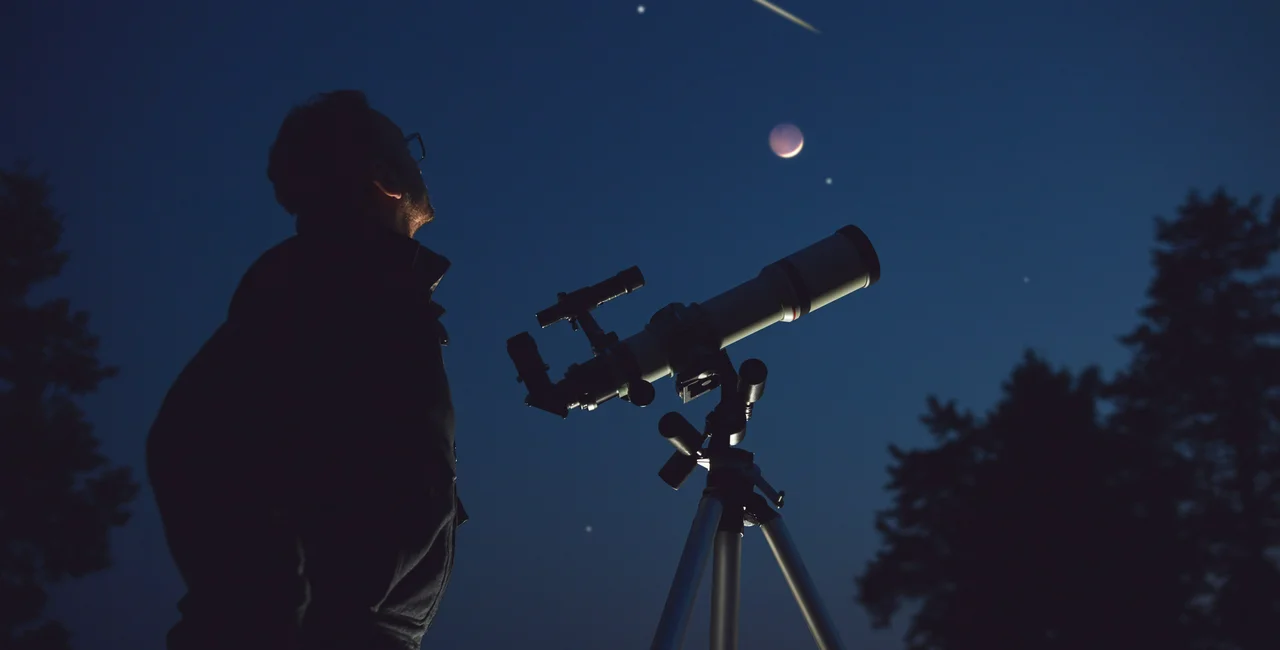Czech skies will have a lot to offer stargazers this year, with no telescope required. Celestial events to look forward to in 2023 include meteor showers, supermoons, a comet, planets aligning, and two weak lunar eclipses.
Most of these occurrences will be visible from Prague with the naked eye or binoculars, but the visibility of the night sky improves further outside the city and away from light pollution.
Unfortunately, the biggest events of the year, two solar eclipses, won't be visible in Europe but those who are in the Indian Ocean on April 20 or on the West Coast of North America or the top of South America on Oct. 14 are in luck.
Wish upon a shooting star
The Quadrantid meteor shower is currently underway and will last until Jan. 10 (though it may be a bit hard to see from a city due to the almost full moon and light pollution). Sky watchers should be able to catch the meteors, also called shooting stars, in the early morning before sunrise looking toward the constellation Boötes.
Other major meteor showers this year include Lyrid (peaking on April 22), Eta Aquariid (May 6), Alpha Capricornid (July 30), Perseid (Aug. 12), Orionid (Oct. 21), Leonid (Nov. 17), Geminid (Dec. 13).
A comet last seen by Neanderthals
A newly discovered comet may be visible to the naked eye at the end of January. Comet C/2022 E3 (ZTF) will pass closest to the sun on Jan. 12 and will be closest to earth on Feb. 1–2. The comet last approached earth some 50,000 years ago, when Neanderthals roamed Europe. According to NASA, it could be visible in the Northern Hemisphere in the early mornings.
“Comets are notoriously unpredictable, but if this one continues its current trend in brightness, it'll be easy to spot with binoculars, and it's just possible it could become visible to the unaided eye under dark skies,” NASA said.
A year of 13 moons
There will be 13 full moons, including four supermoons, where the full moon appears larger than normal. While 13 full moons may sound unusual, the phenomenon occurs every two and a half years on average.
The supermoons will be visible on July 3, Aug. 1, Aug, 31, and Sept. 29. Since August has two full moons, the second one is a calendrical blue moon, but its color will be normal. A second type of blue moon, called a seasonal blue moon, will not occur until 2024 according to The Old Farmer’s Almanac.
Where to watch: The Štefánik Observatory and Ďáblice Observatory are open to the public on evenings when the sky is clear. The opening hours and days change throughout the year, so check online before going. Helpful staff members find planets and other celestial phenomena for people to look at through large telescopes.
Disappointing lunar eclipses
A penumbral lunar eclipse will be visible across Europe on May 5. This type of eclipse is barely noticeable under the best conditions, as the moon just passes through the secondary shadow, or penumbra, of the earth. The eclipse will reach its peak around 5:30 p.m. on May 5, while the sun is still up, and will still be partly underway when the sun sets around 8:30 p.m.
A partial lunar eclipse takes place on Oct. 28. This one will be much more obvious to the naked eye, as the full shadow of the earth will cover part of the moon. From Prague, a sliver of the lower part of the moon should turn deep red, reaching its maximum at 8:14 p.m. on Oct. 28.
There will also be several chances to catch bright planets in close proximity to each other:
- Jan. 23 after sunset: Venus and Saturn will appear almost together, just below the crescent moon on the horizon.
- Feb. 22 after sunset: Venus and Jupiter will be next to a crescent moon.
- March 1 after sunset: Venus and Jupiter will appear almost together in the southwest an hour after sunset.
- May 22 and 23 after sunset: Mars and Venus appear with the moon in the Gemini constellation just after sunset.












 Reading time: 3 minutes
Reading time: 3 minutes 





























